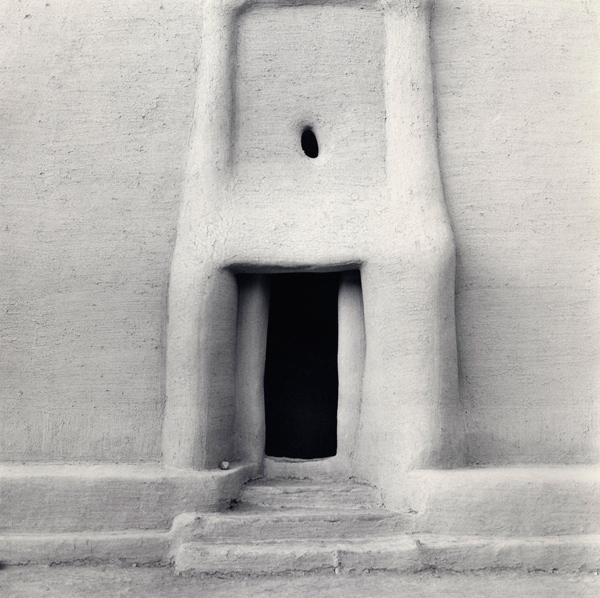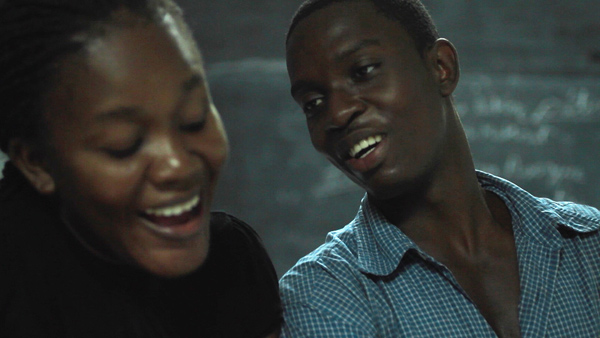5 Exhibitions to See in February

Nina Berman, Pro-choice demonstrators in downtown Manhattan protest the July 3rd, 1989 Supreme Court Webster decision which limited Roe V Wade. This was a turning point in the pro-choice movement. 24 were arrested, including activist Mary Lou Greenberg, as they stormed the Brooklyn Bridge
© the artist
‘Whose Streets? Our Streets!’: New York City, 1980–2000
Bronx Documentary Center, 614 Courtlandt Avenue, Bronx
Through March 14, 2017
Since the outpouring of protests nationwide for Black Lives Matter, Standing Rock, and the post-inaugural Women’s Marches, people of color, immigrants, women, and other routinely oppressed groups may feel as though the enduring challenges and injustices of their daily lives have finally caught the nation’s attention. But Whose Streets?, curated by Meg Handler, Tamar Carroll, and Michael Kamber, is a potent reminder that the issues that galvanized protesters at the end of the twentieth century—police brutality, racial equality, LGBT rights, reproductive rights, and U.S. foreign policy—remain vividly relevant today. Featuring the work of nearly forty independent photojournalists, the images document historic demonstrations such as the 1988 Tompkins Square Park riots, as well as nonviolent civil disobedience and organized protests. Despite a few anachronisms like fashion styles and references to specific politicians, the scenes could easily be mistaken for recent demonstrations. This exhibition provides a historical context for today’s social conflicts and might yet provide an example for the future.

Ming Smith, Sun Ra space II, New York City, New York, 1978
Courtesy Steven Kasher Gallery, New York
Steven Kasher Gallery, 515 West 26th Street, New York
Through February 18th, 2017
Ming Smith’s photographs are often blurry, out of focus, and dark. But, in luxurious black tones, she produces moments that evoke her personal response to life, rather than a straightforward account. In the 1970s, as the only original female member of the African American photography collective Kamoinge (from the Kenyan language of Kikuyu, meaning a group of people acting together), Smith was uninhibited by stereotypical depictions of black culture. The most arresting of her abstract, sometimes mystical photographs is a portrait of the otherworldly Sun Ra, the American jazz musician, poet, and philosopher, who Smith captured in motion, with a shimmering cape floating over his shoulders as though he was wearing a galaxy. Through widely varied styles—in one image, the heads of James Baldwin and James Van Der Zee float between clouds above Harlem—Smith’s photographs evoke a world that confounds and delights.

Jonathas de Andrade, Still from O peixe [The fish], 2016
Courtesy Alexander and Bonin, New York, and Galeria Vermelho, São Paulo
New Museum, 235 Bowery, New York
Through April 9, 2017
O Peixe, the 38-minute film by Brazilian artist Jonathas de Andrade, floats halfway down the lobby gallery at the New Museum, transforming the room into a minimalist theater. The setting encourages visitors to linger with the film, which benefits from being viewed in full. De Andrade’s gorgeous vignettes show lone men catching fish near a coastal village in northeastern Brazil, then holding each fish to their chest to tenderly caress them as, out of the water, they slowly suffocate. Employing an ethnographic style, de Andrade implies that there is some unknown truth to be learned from this odd combination of compassion and cruelty. However, he invented the ritual the fishermen perform, contradicting our assumption of objectivity. With this realization by way of the wall text, the film becomes a critique of documentary “truth” as well as the naïve objectification of unfamiliar cultures.

Carrie Mae Weems, Shape of Things (female), 1993
© and courtesy the artist and Jack Shainman Gallery, New York
The Poetics of Place: Contemporary Photographs from The Met Collection
The Metropolitan Museum of Art, 1000 Fifth Avenue, New York
Through May 28, 2017
The forty-one works in The Poetics of Place demonstrate that the identity of a “place” extends beyond its geographic location. Sometimes human-made structures appear to mirror human forms, as with Carrie Mae Weems’s 1993 photograph depicting an ancient façade in Djenné, Mali that resembles the female body. Time also plays an integral role in the development of a place’s characteristics. For his 1973 Polaroid photographs, Walker Evans returned to Hale County, where he made many of his classic Depression-era photographs nearly forty years earlier. Employing a geological approach, Sarah Anne Johnson delicately scratched a radiating grid into her photograph of the Arctic Circle. Her unconventional treatment of the print emphasizes the Arctic’s precarious future. With works made in ten different countries from 1968 to the present, the exhibition exposes the countless ways human interaction shapes a place, and how, in turn, a place can shape us.

Beatriz Santiago Muñoz, Still from Nocturne, 2014
Courtesy the artist and Galería Agustina Ferreyra
Beatriz Santiago Muñoz: A Universe of Fragile Mirrors
El Museo del Barrio, 1230 Fifth Avenue, New York
Through April 30, 2017
Beatriz Santiago Muñoz’s solo exhibition, her first in the United States, rewards patience. Contradictions abound as narratives of magic, betrayal, discovery, and abandonment gradually unravel. Santiago Muñoz uses film, photography, sculpture, and sound with an anthropological tenacity to examine postcolonial conditions in the Caribbean. The installation, centered on eight continuously looping films, presents lush views of Santiago Muñoz’s natural and human subjects. Two boys casually explore the jungle surrounding an indigenous burial site and the major freeway built over it; light filters into an abandoned cinema on a decommissioned U.S. naval base in Puerto Rico; a woman and black cat enact stereotypical tropes of mysticism and superstition. Each narrative demonstrates the conflicting yet inextricable relationship between reality and legend.

























